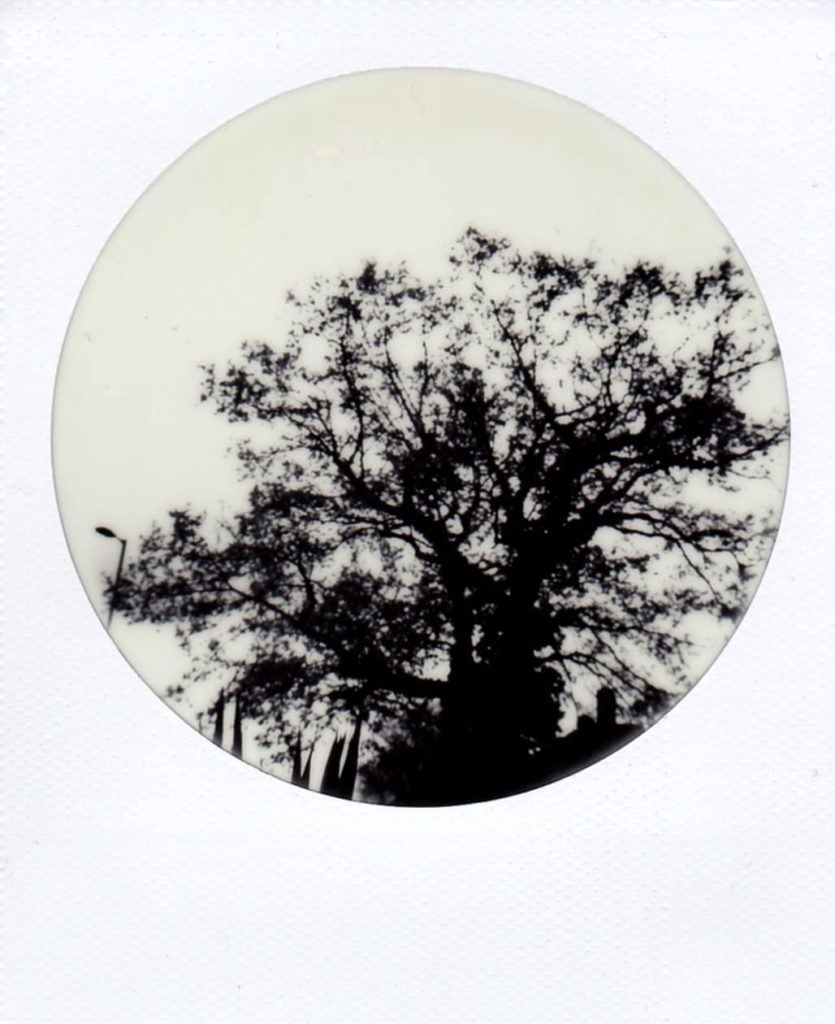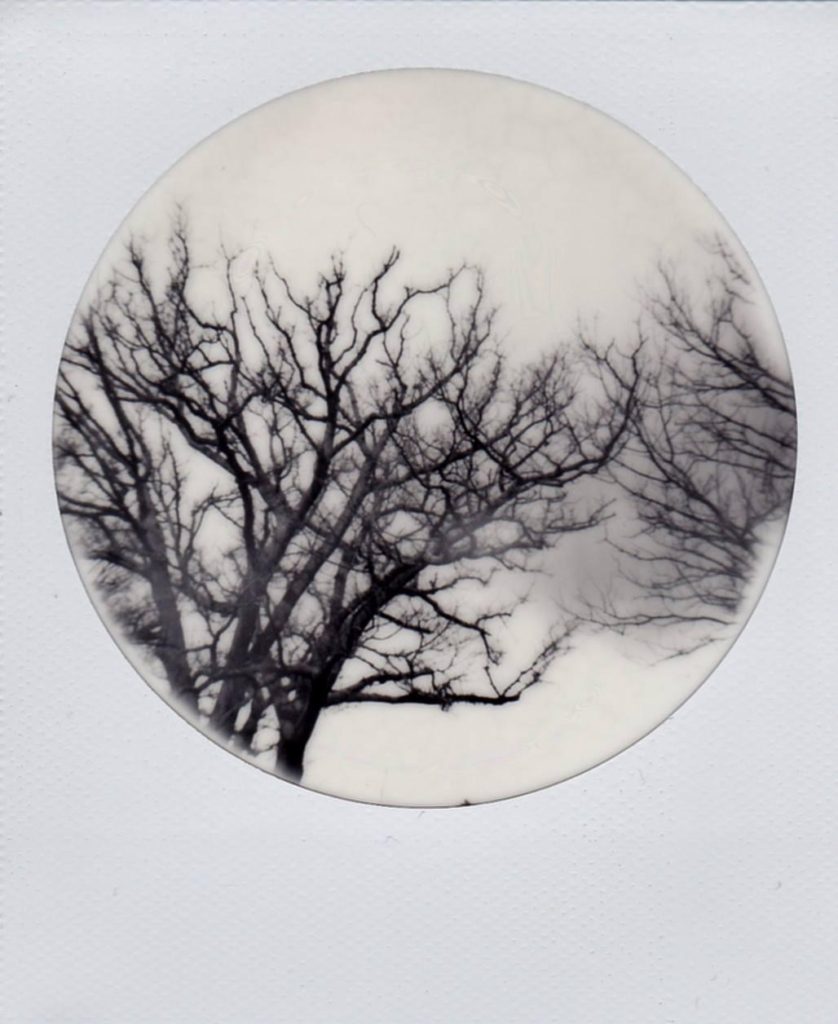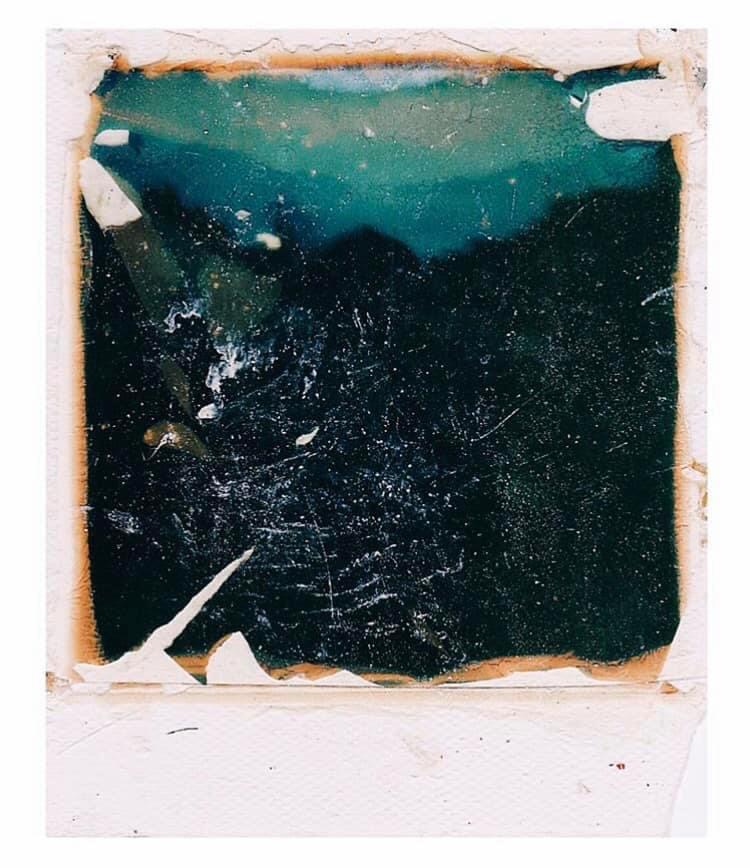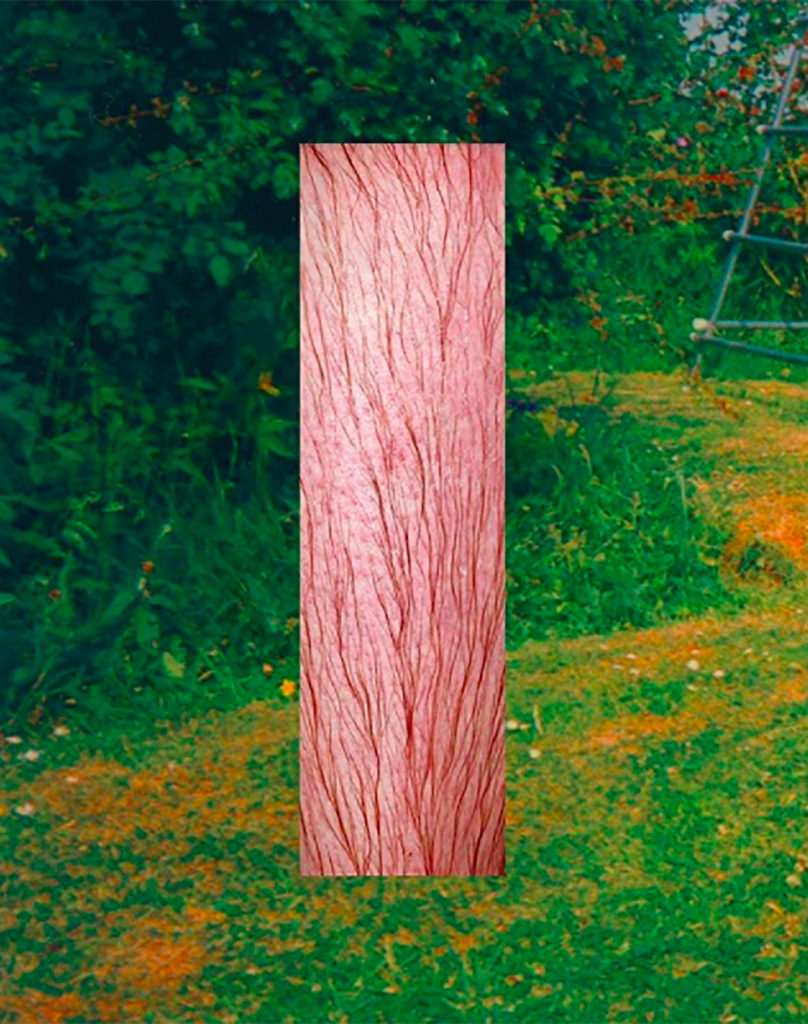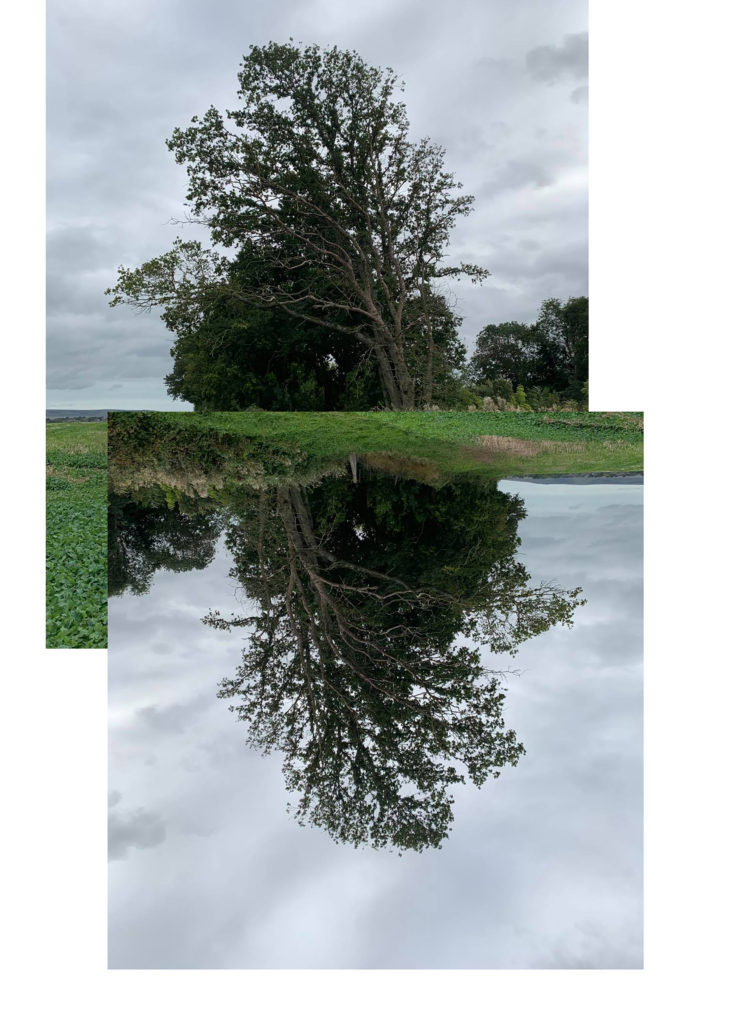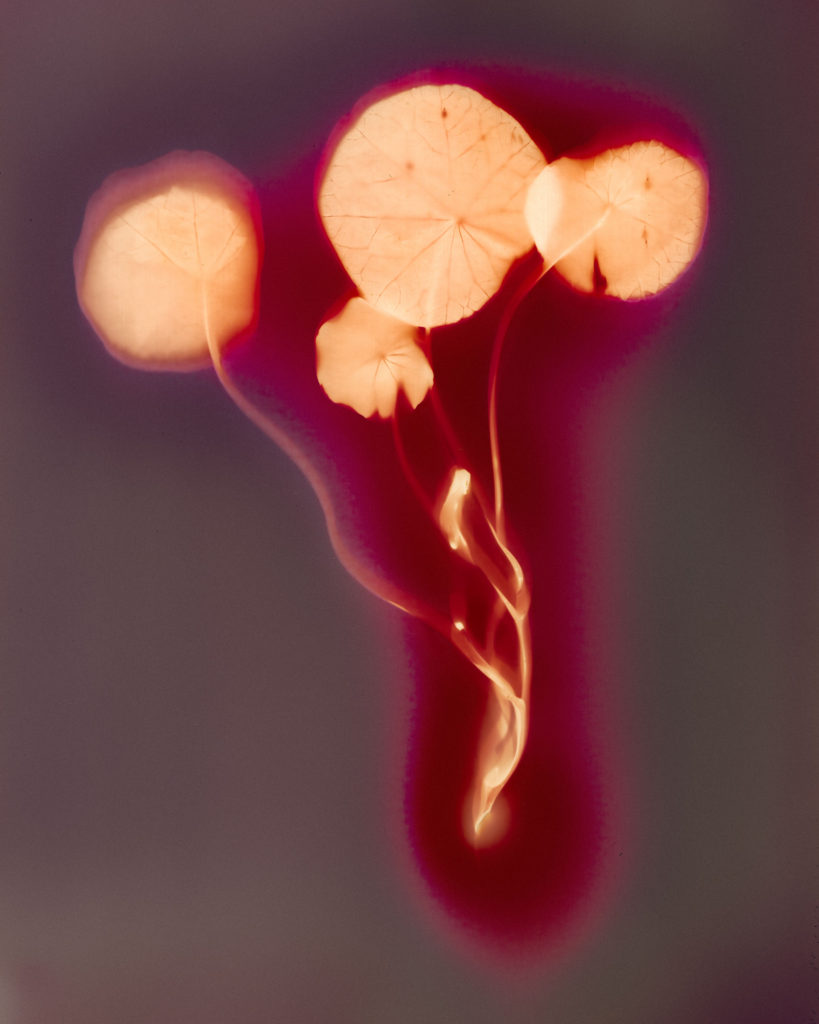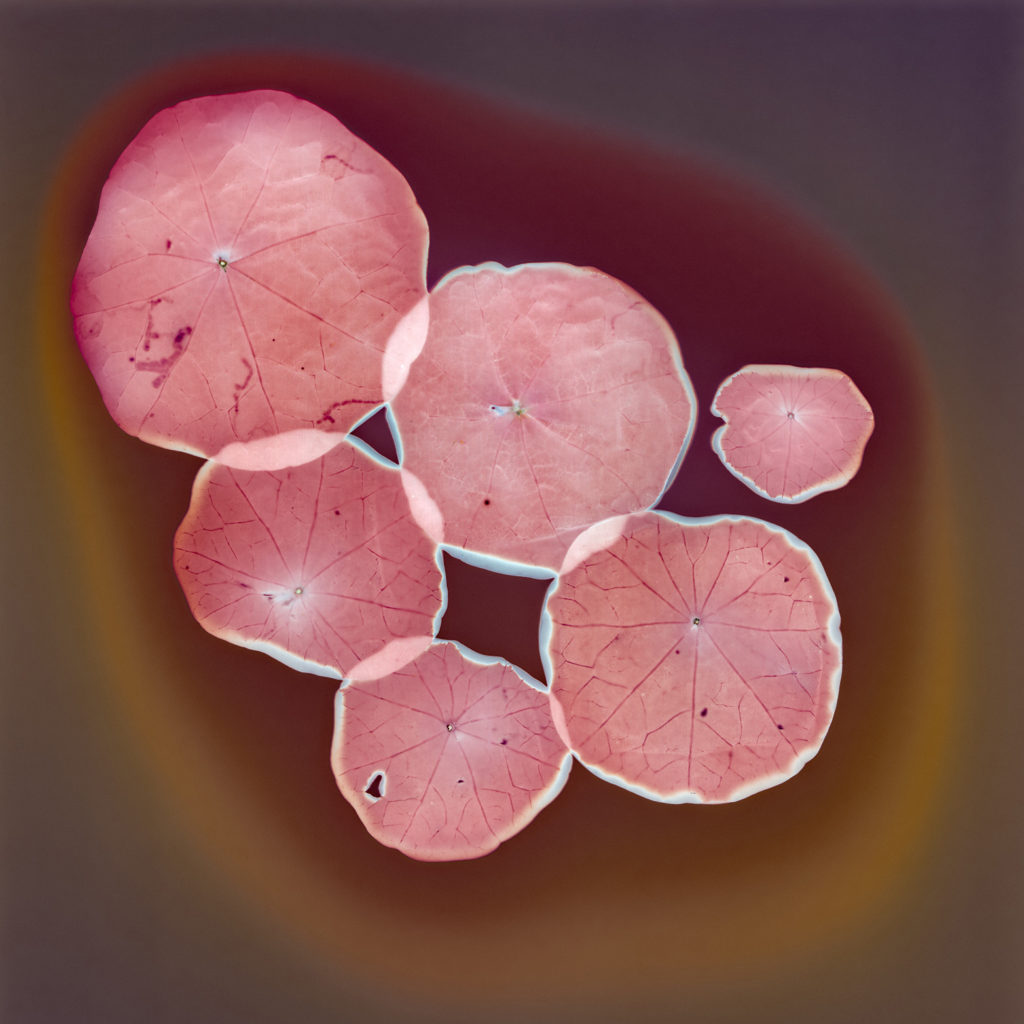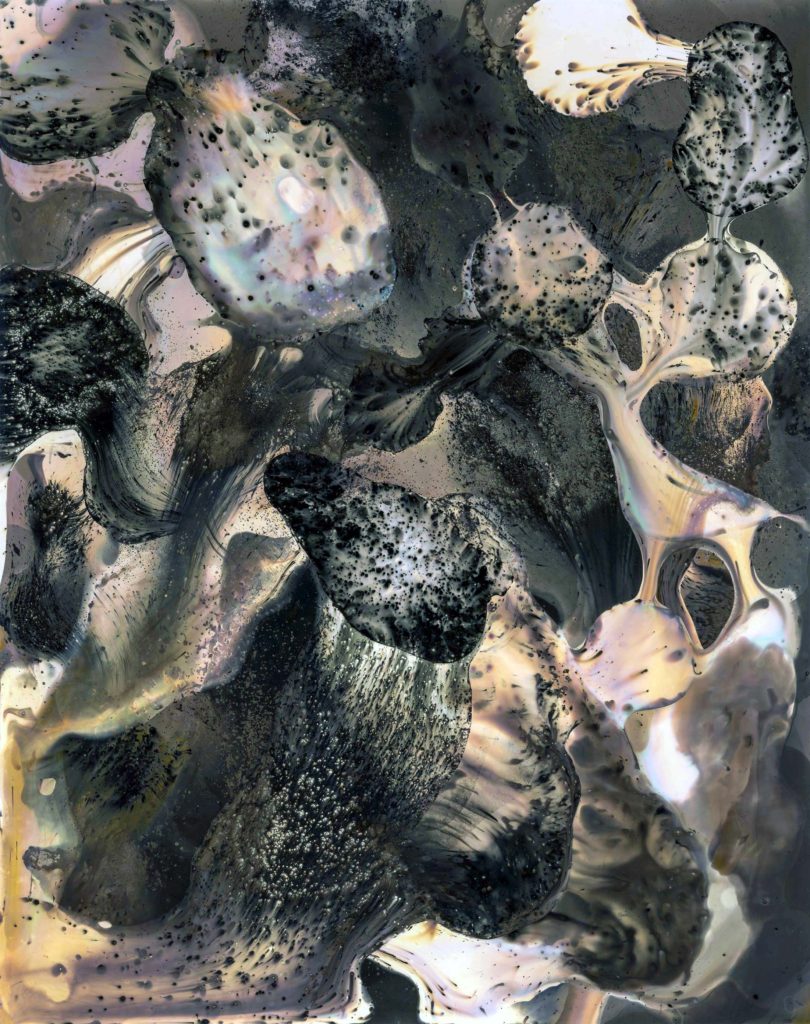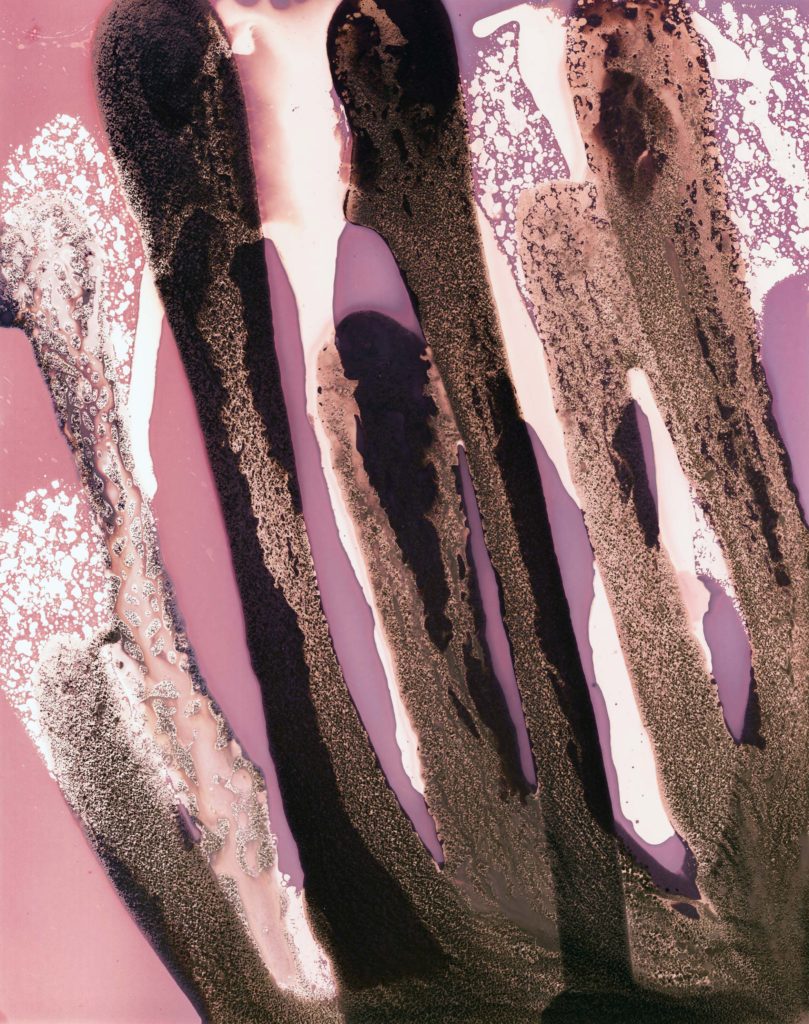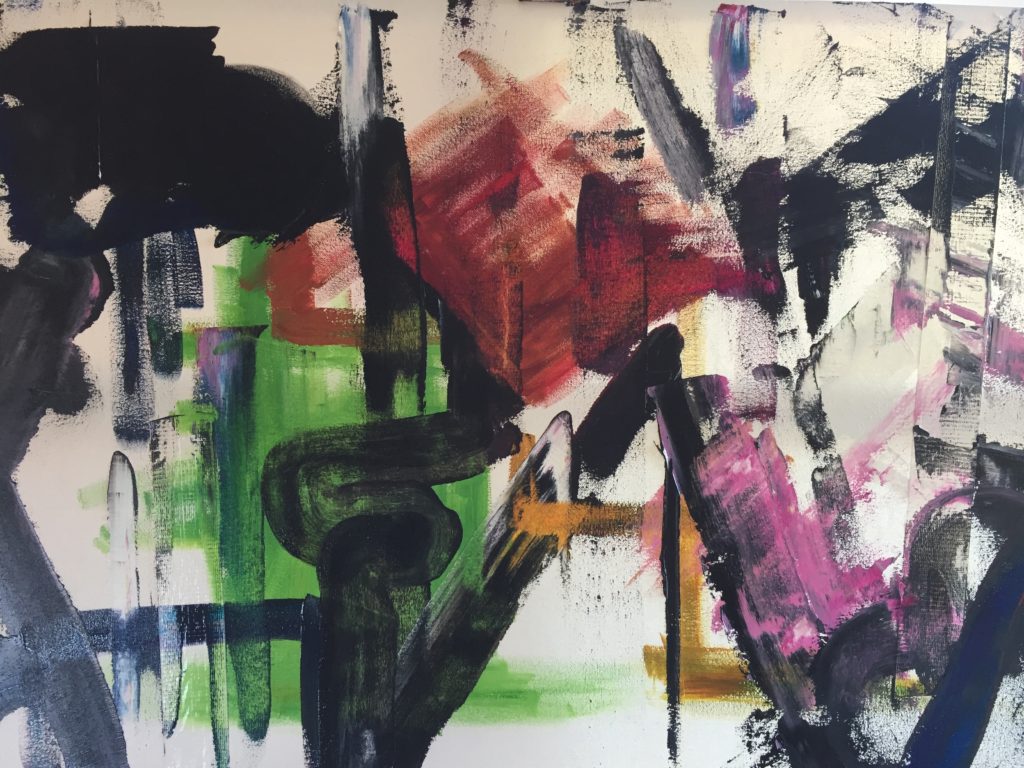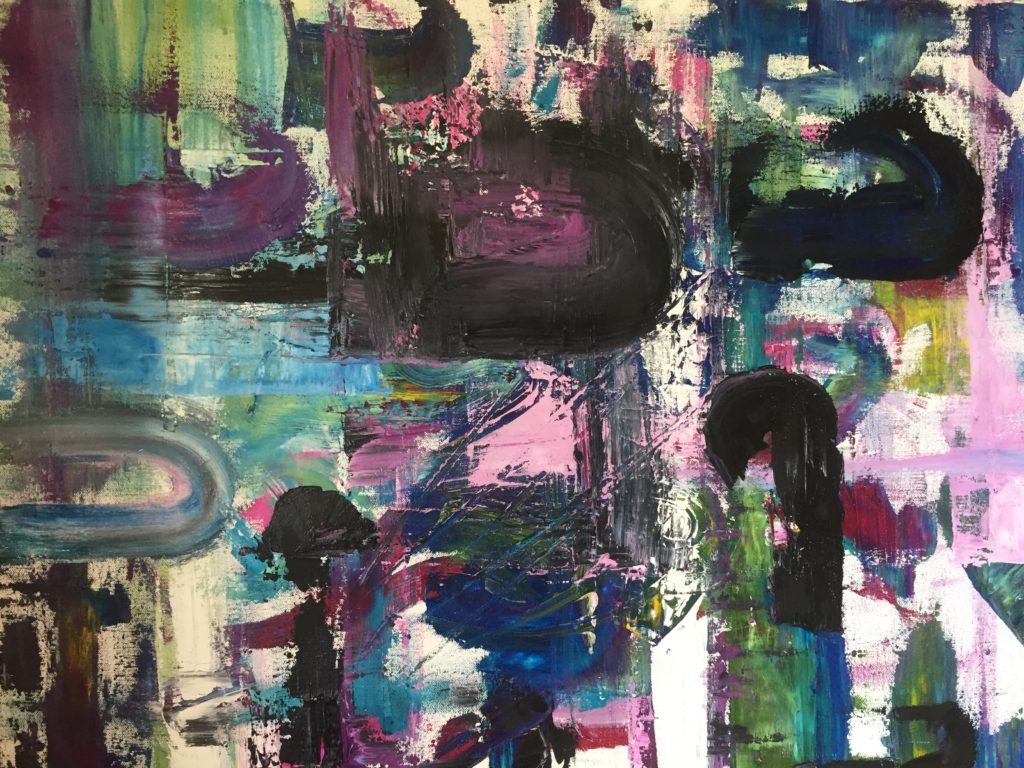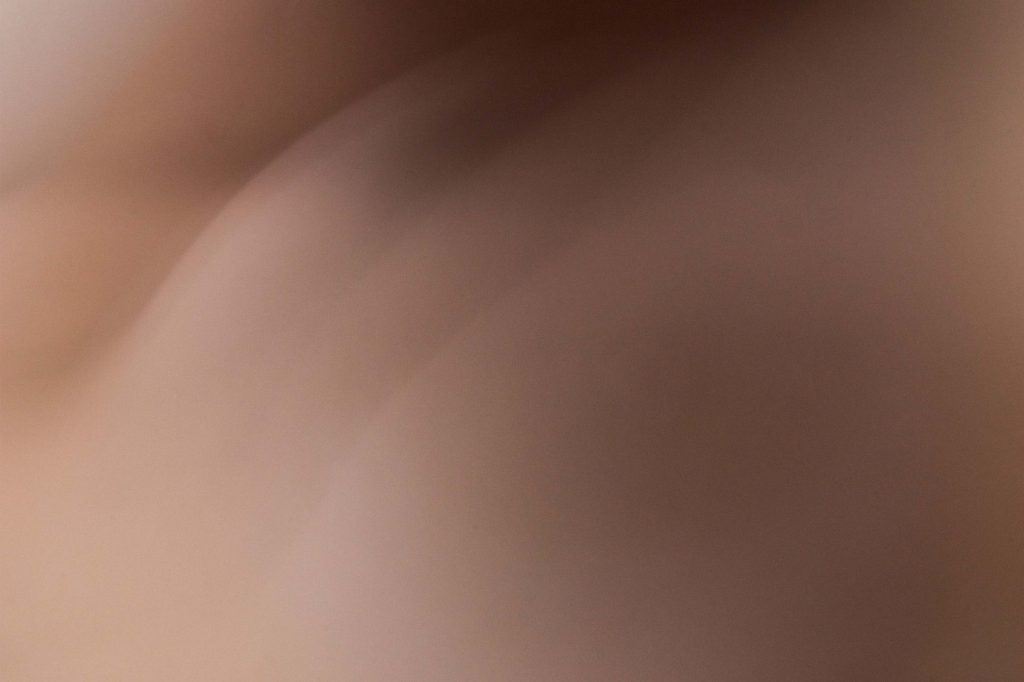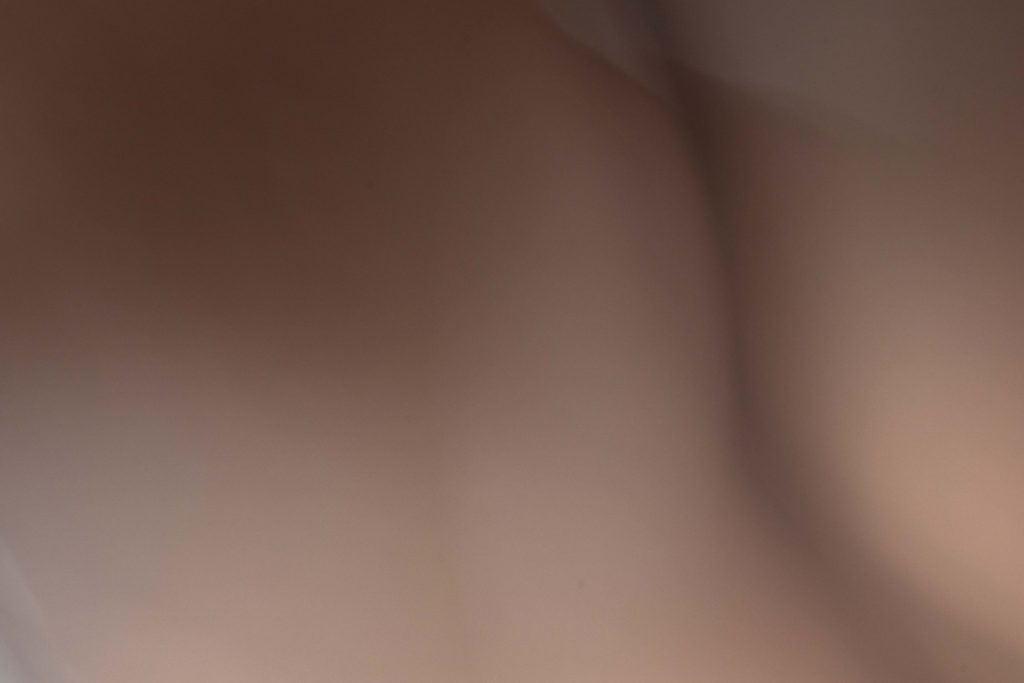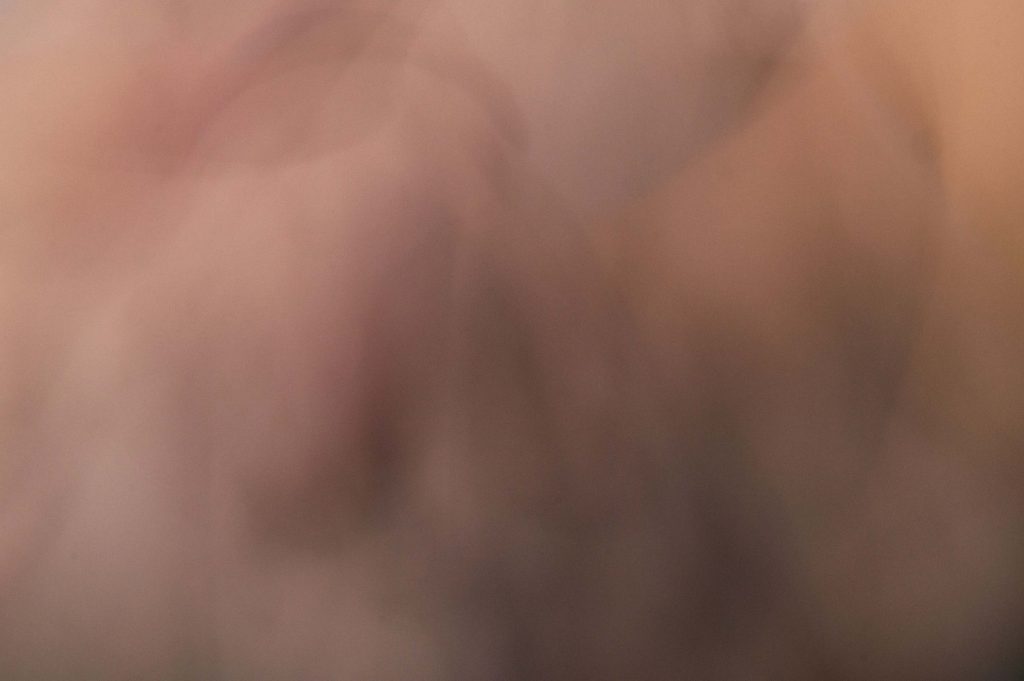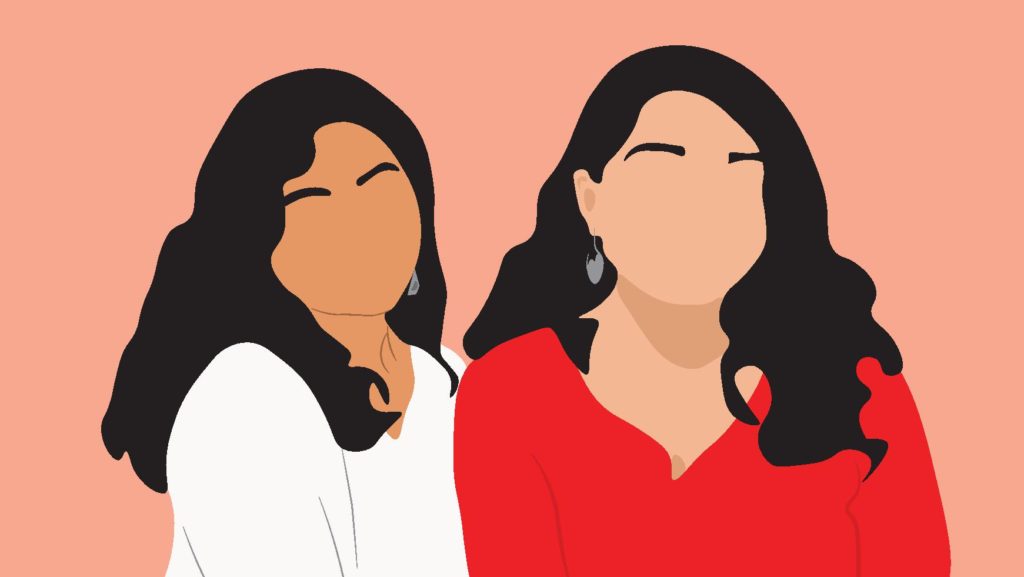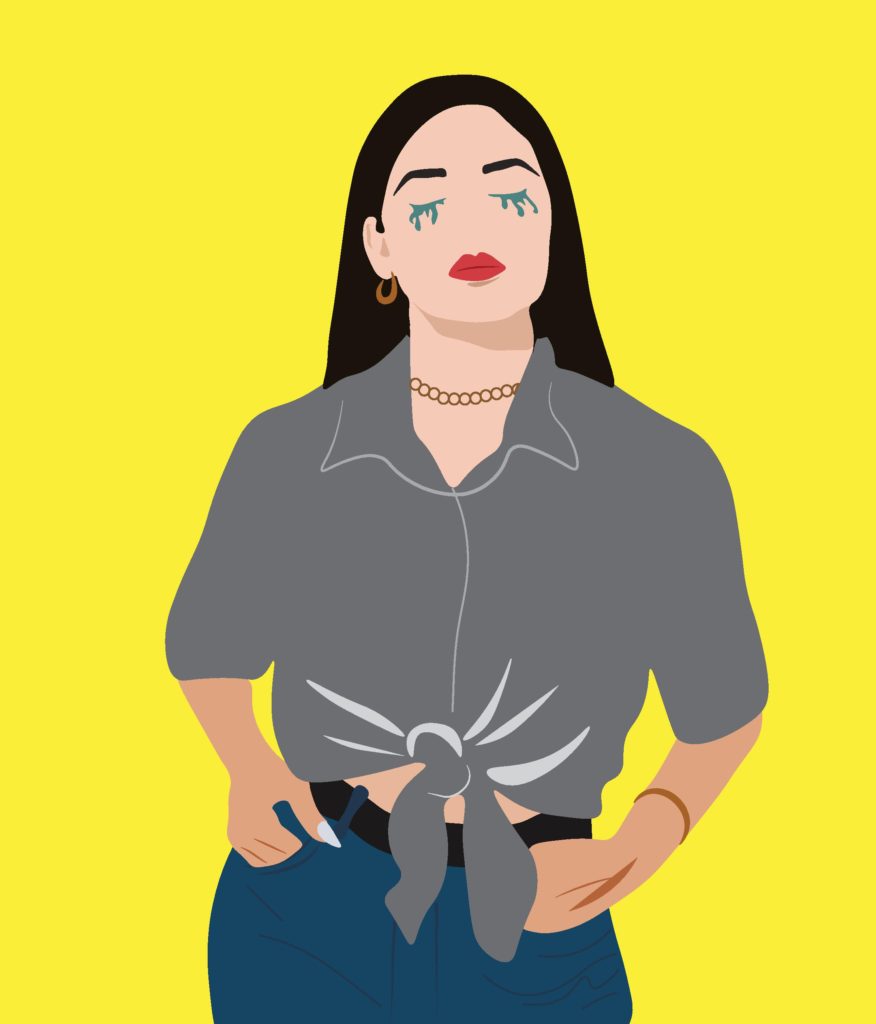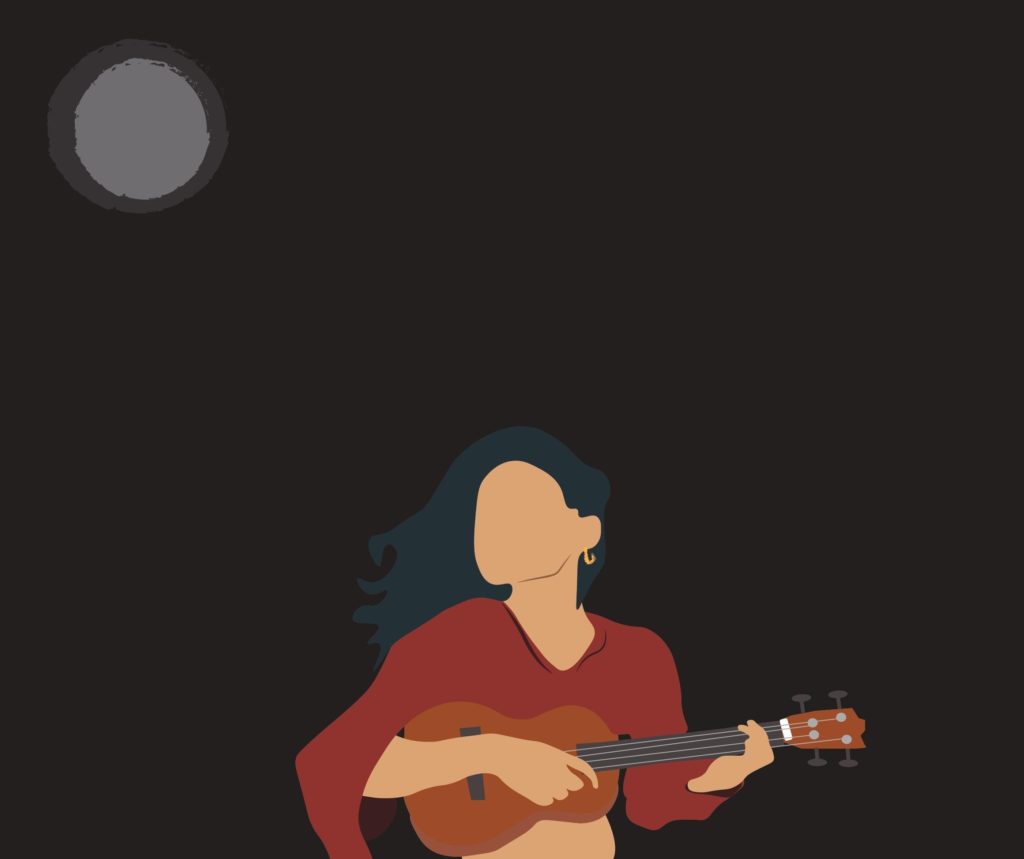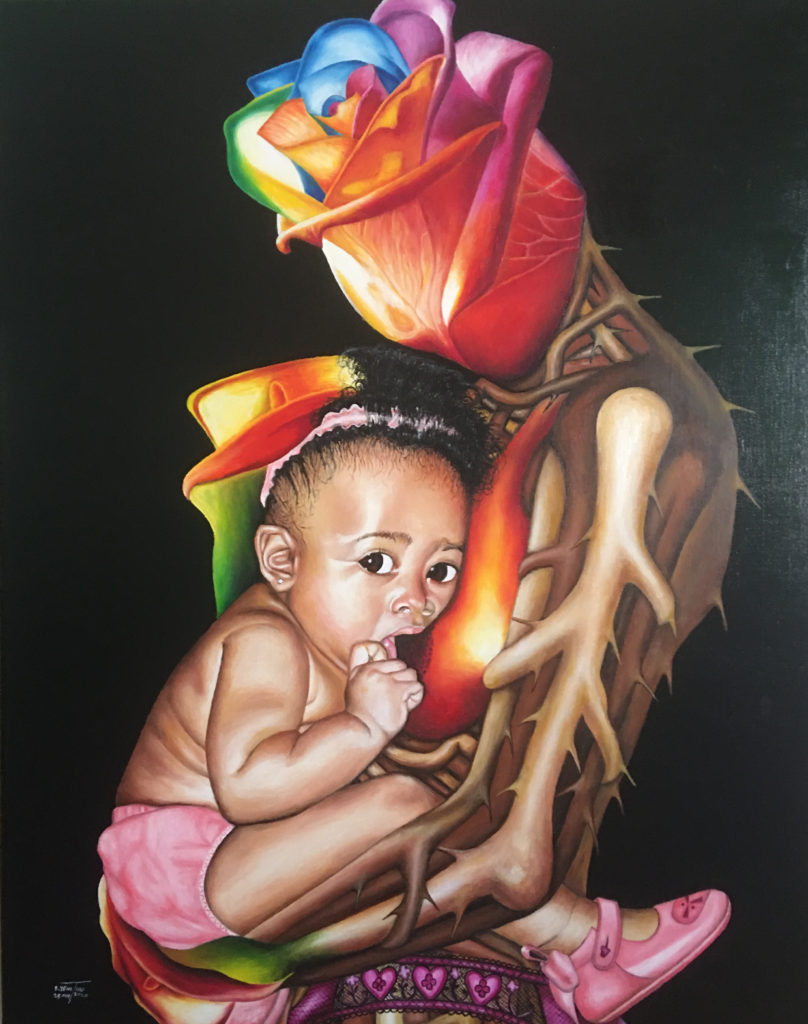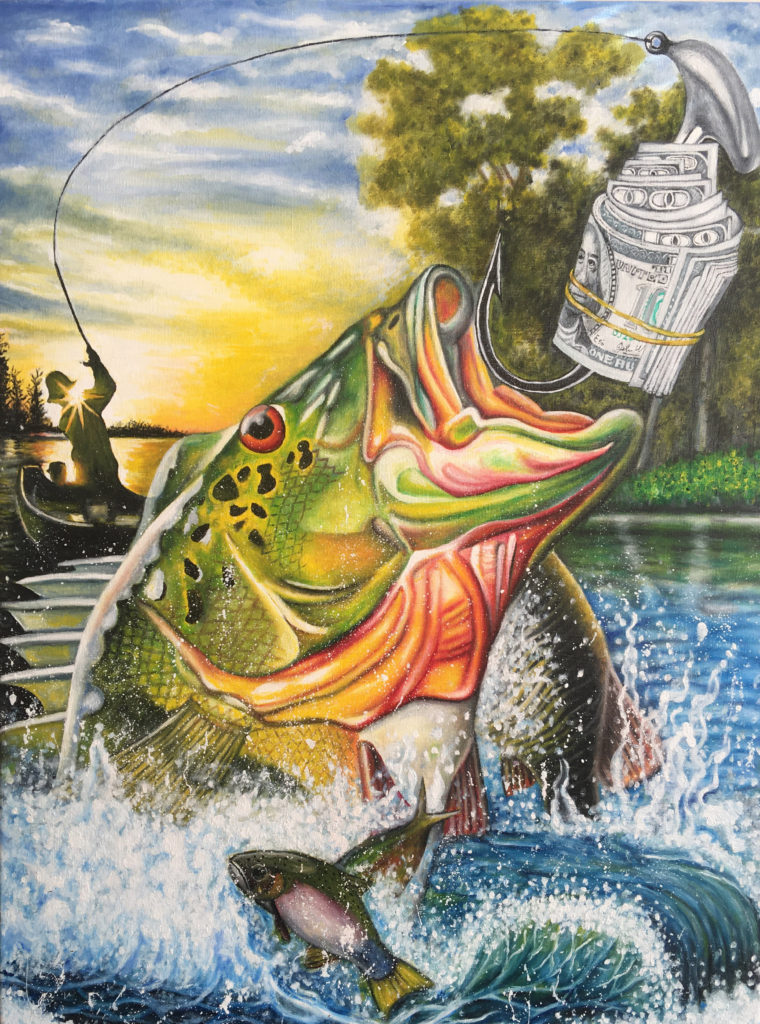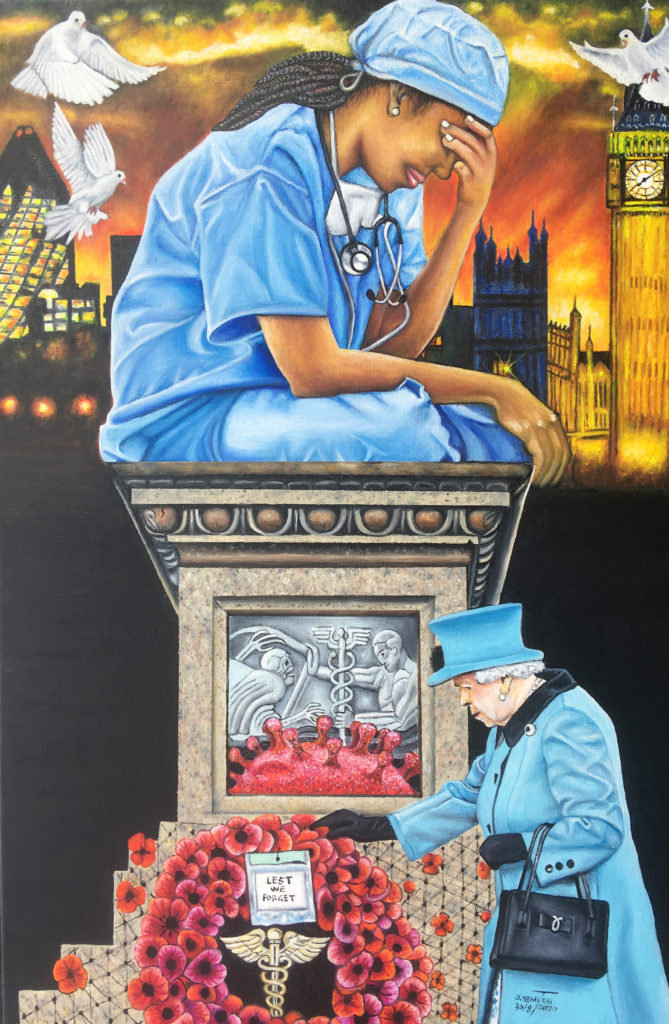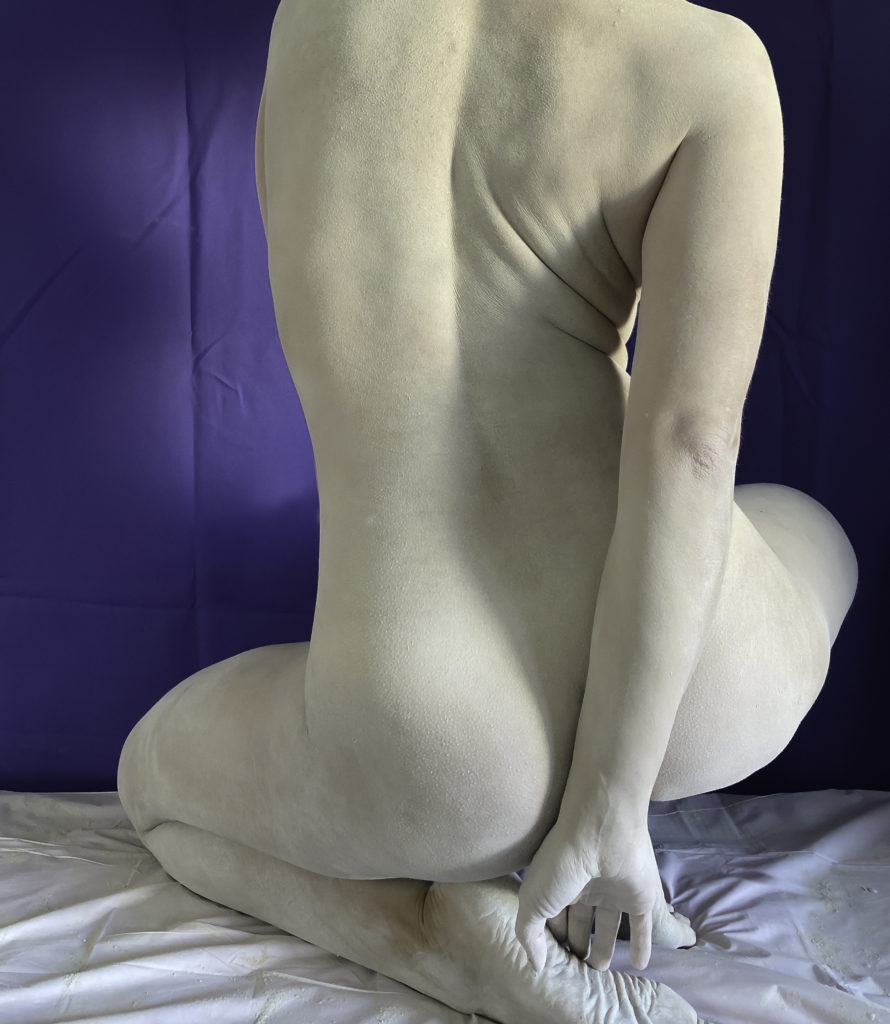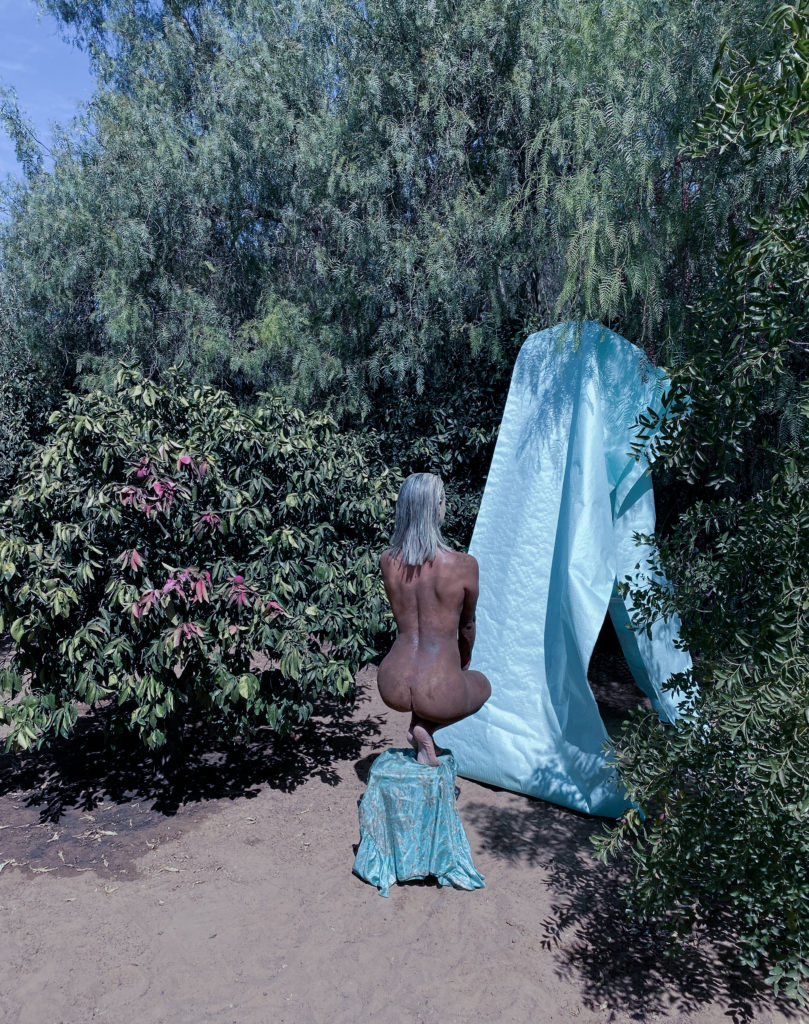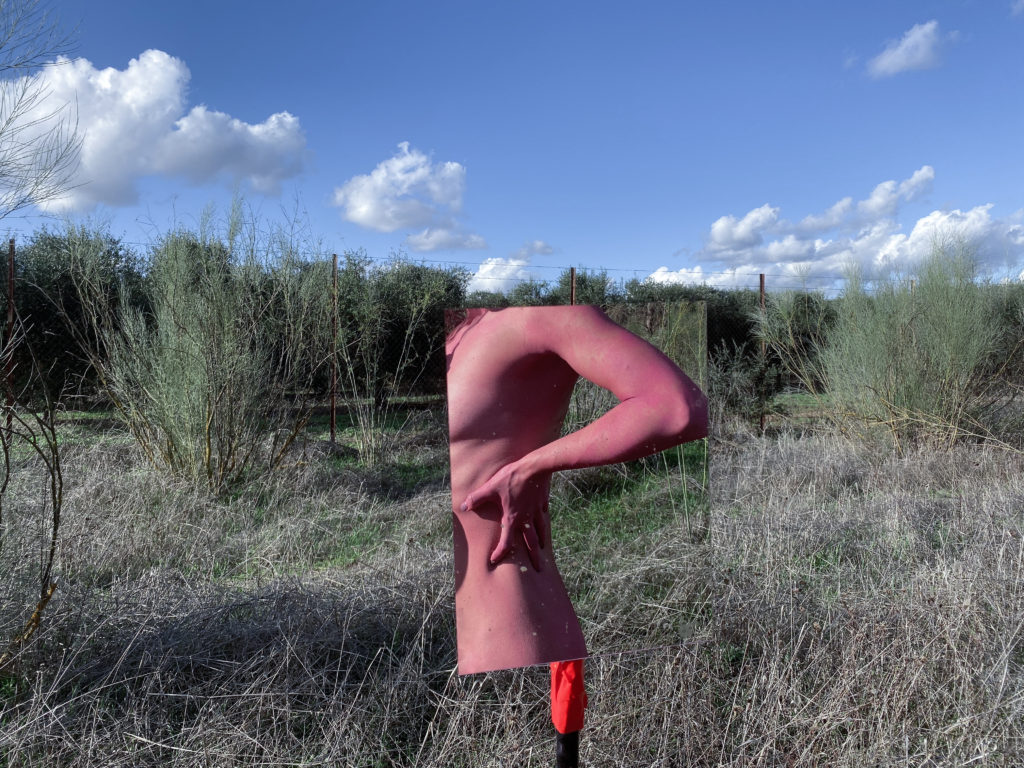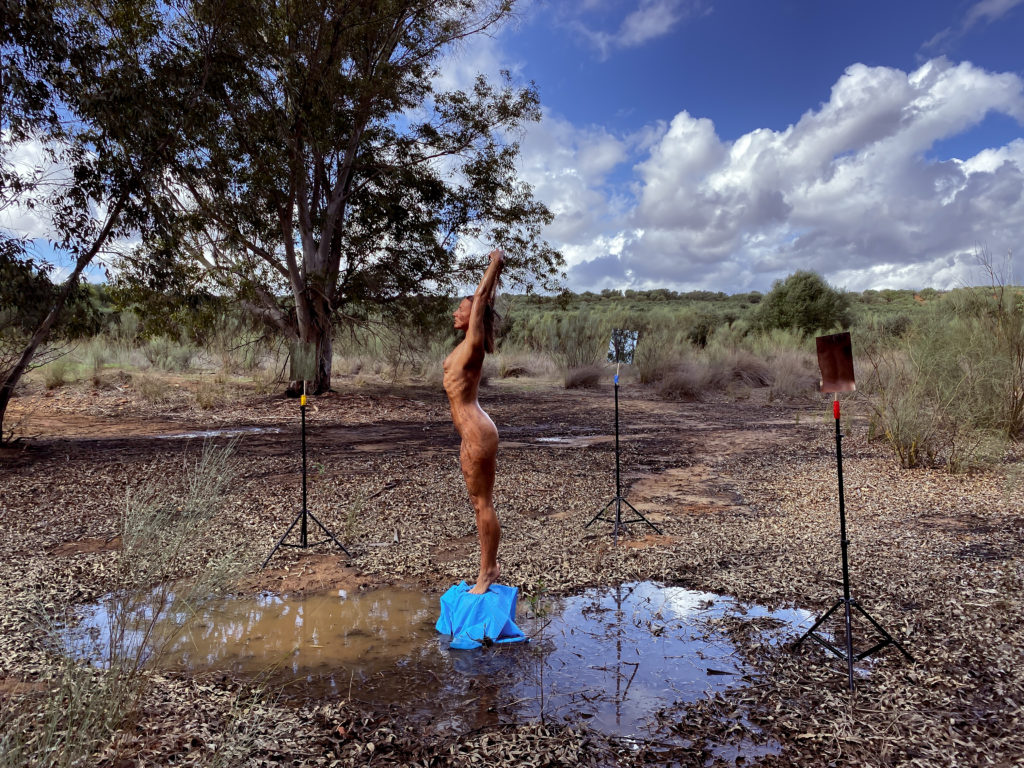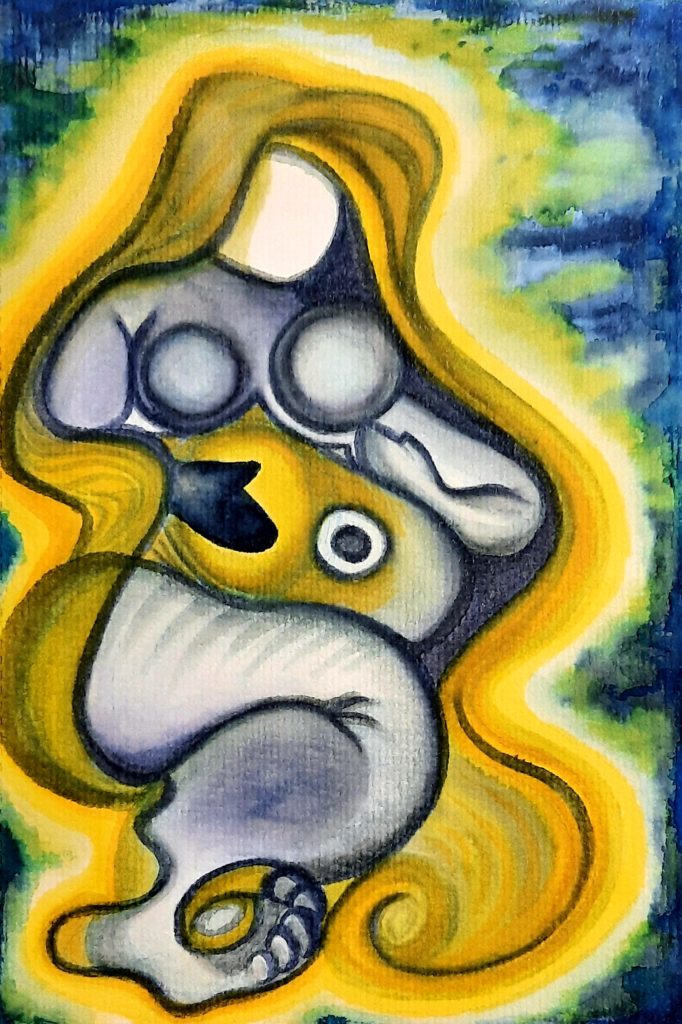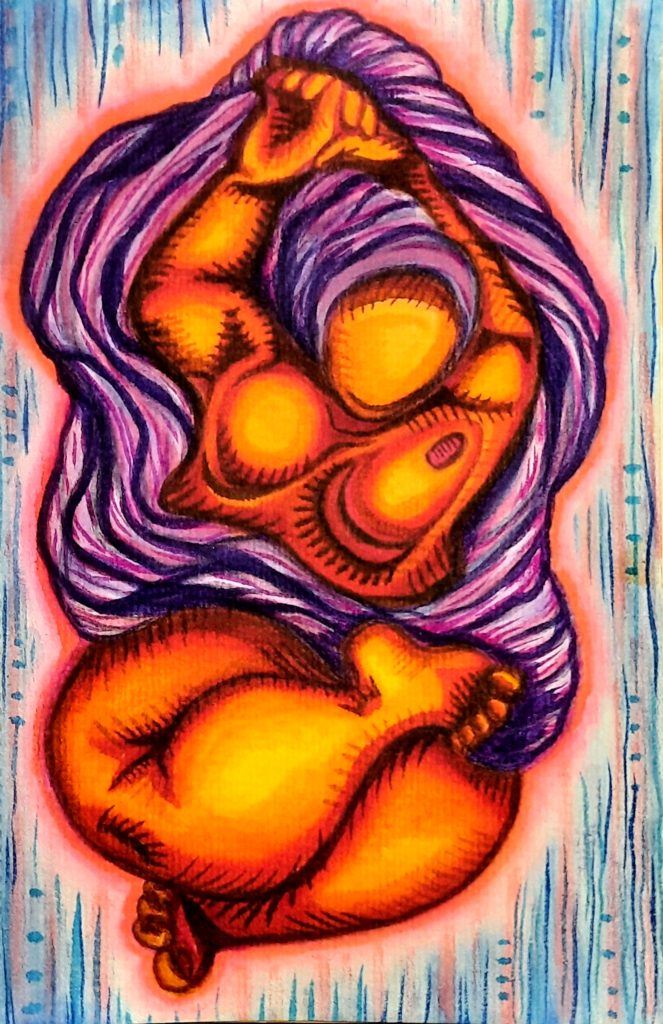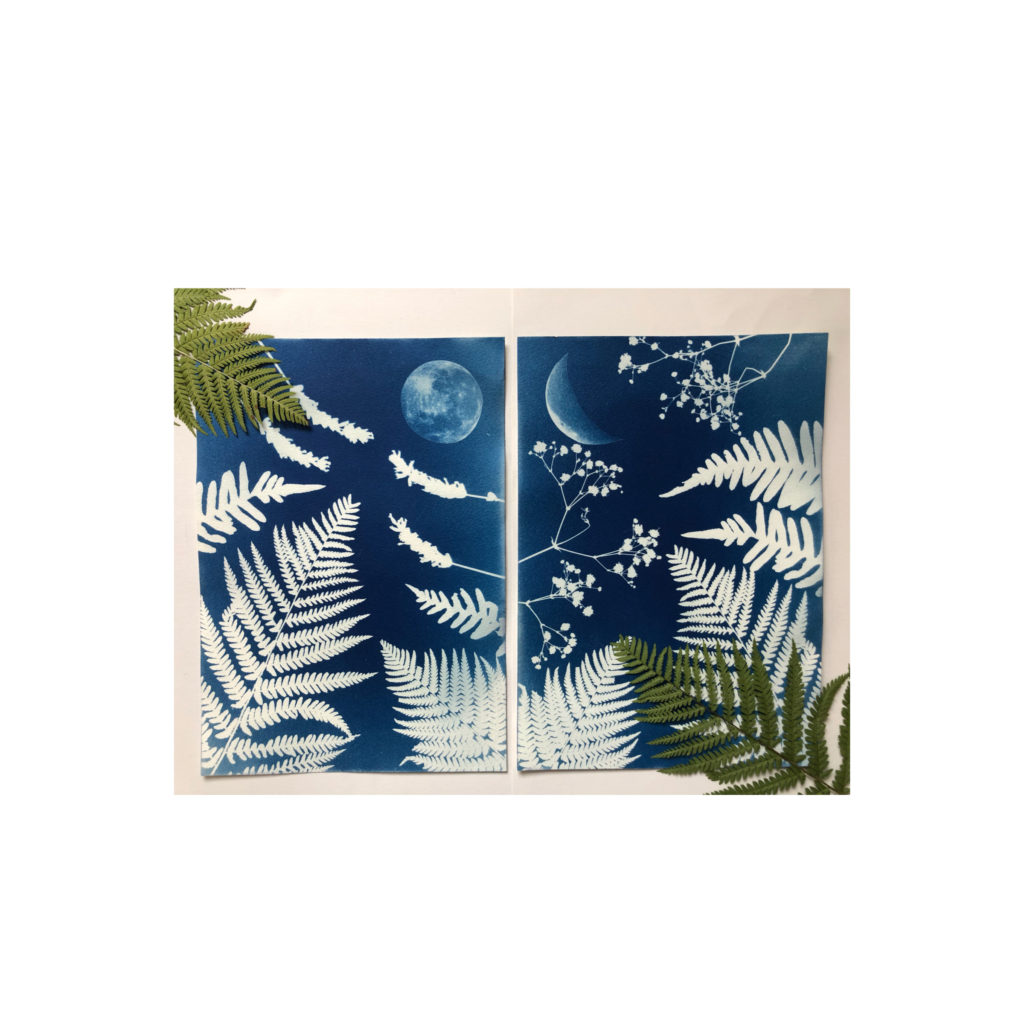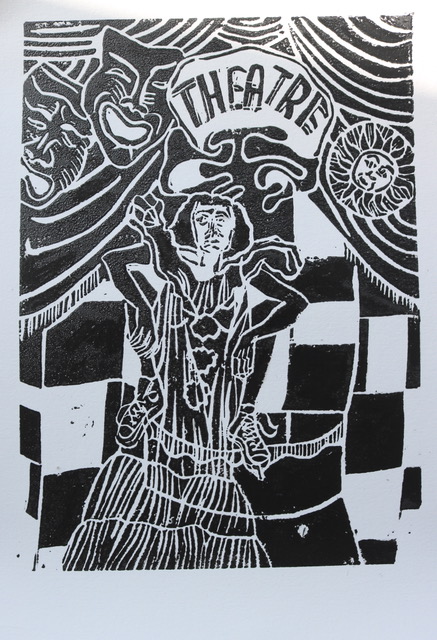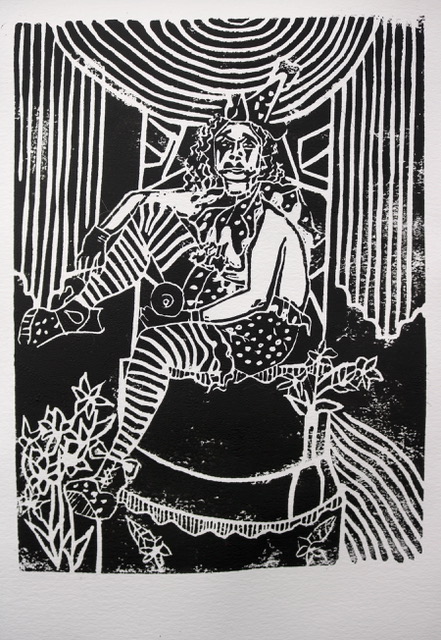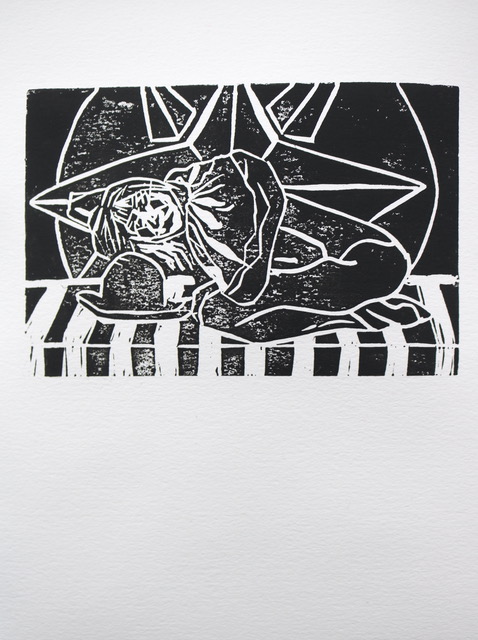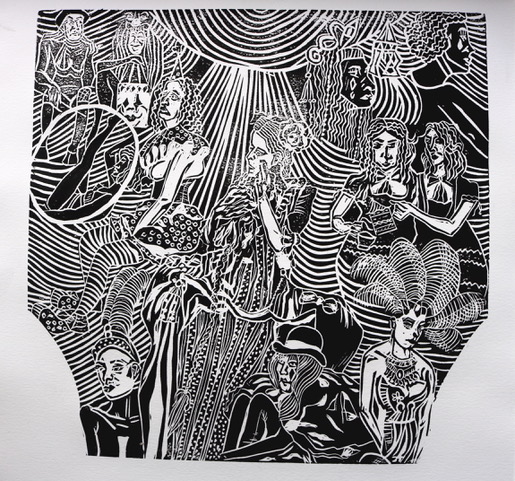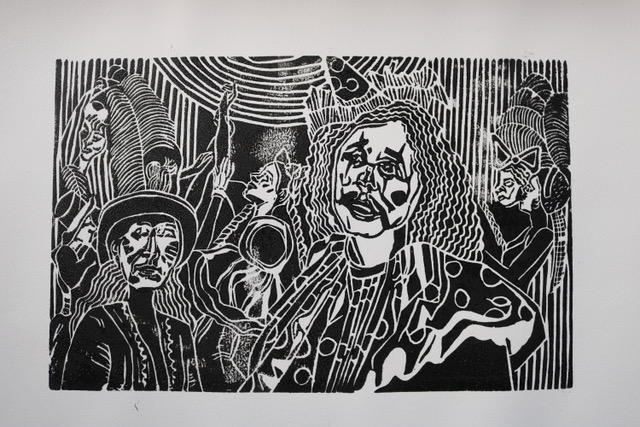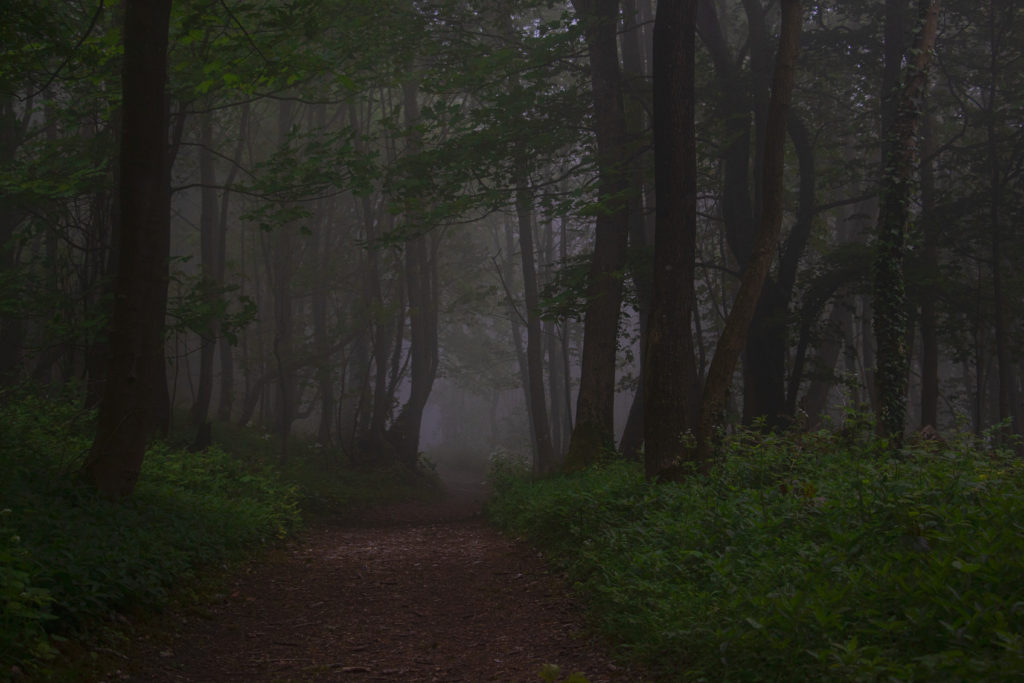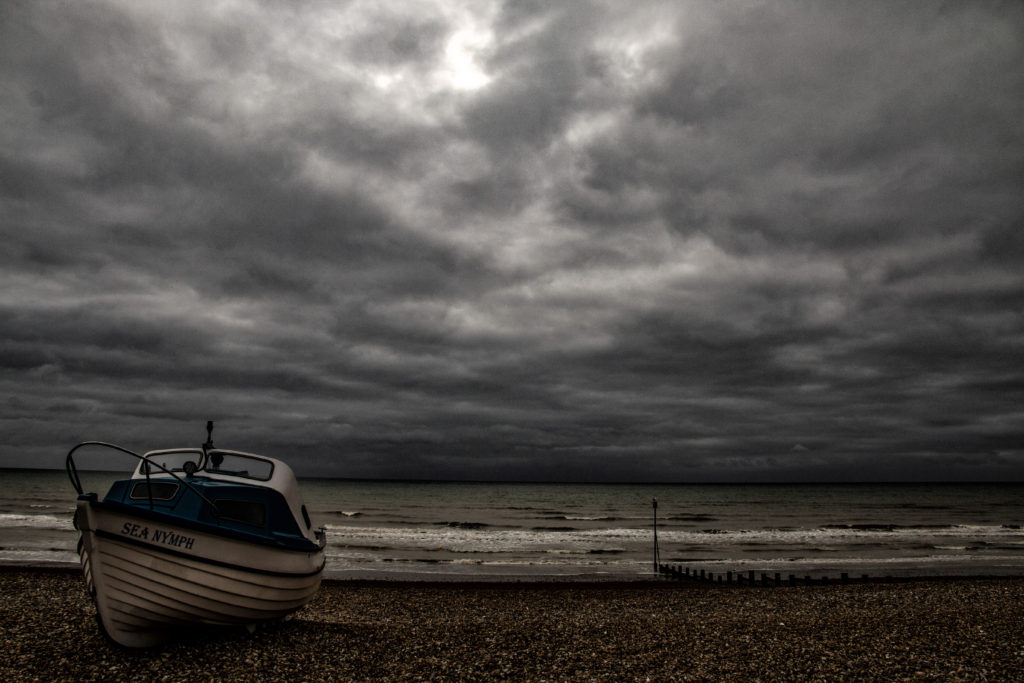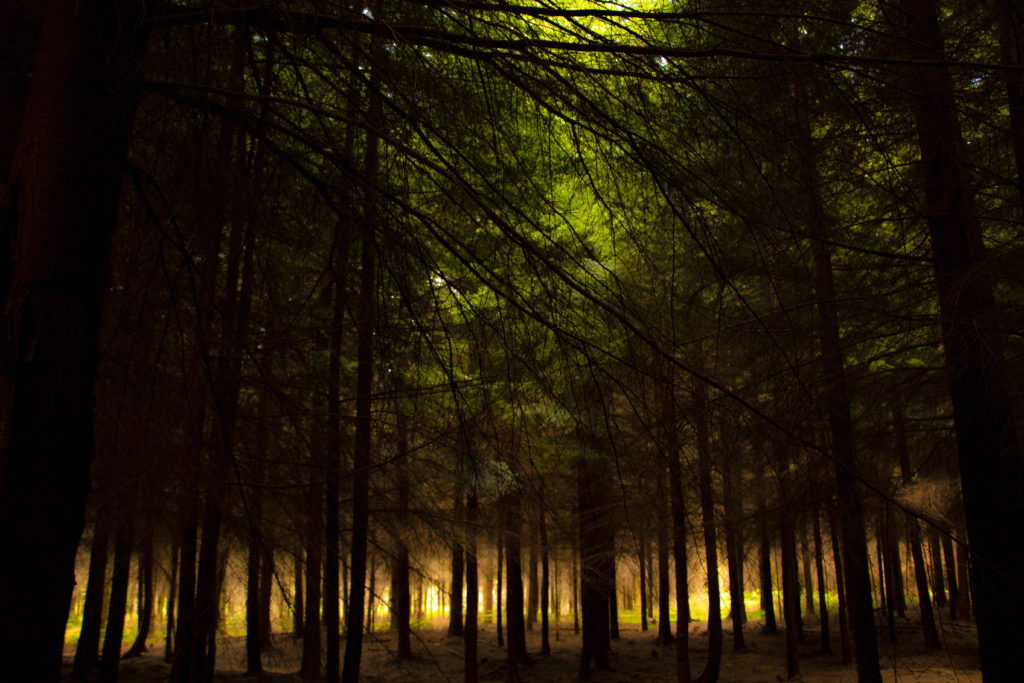View Store Here! Contact collectivepachamama@gmail.com for any sales inquiries!
Andreea Andrei
Artist Statement
Andreea Andrei’s work in instant photography has been a way for finding her dreams and her place in this world. All her work done with Polaroids represents a period that she has been through since she and her family decided to move abroad and start all over again in a new place, with new people and a new way of seeing things. She found peace while shooting with her two Polaroid cameras that she managed to buy since she moved in 2015 to the UK.
Her work is about the intimacy and the feelings that one person has while inside of them – a constant battle between the old self and the new self. A battle that with time can decimate your most inner thoughts about your roots, about your life and where you stand. She has always thought that the uniqueness of each Polaroid image made her feel much closer to what she felt when she decided to start a life in a new country and place. By using Polaroids to tell the world how she felt made her open to meeting new people whilst traveling solo.
Andreea Andrei is a visual artist based in the United Kingdom. She was educated at Film School in Bucharest, Romania and National Film and Television School, London, United Kingdom. Her work has been extensively exhibited and published both in the UK and internationally. Her art focuses on social documentary, portraiture and fashion, and seeks to explore the complex relationship between subject and photographer. Andreea is driven by the curiosity that lies between a real moment that unfolds before your eyes and how you can freeze that moment in a photograph. She’s drawn to personal projects that she can relate to. She likes to know the person and tries to make a deep connection with the person before photographing them. She uses on her personal projects both her film and Polaroid cameras to explore the human emotions through the lens and try to capture the essence in that moment. She thinks that by having an old school camera with her it gives time and space for her sitter to be comfortable and show his/her true self.
Adam Spain
David Sacks
Artist Statement
The end of graduate school in March 2020 coincided with the beginning of a COVID-lockdown in South Africa. I used this time to immerse myself in my chemigram and fine art. Chemigram means “writing with chemistry”: I use photosensitive paper and chemicals in non-traditional ways. Controlling how and what chemicals develop and fix the paper allows for unlimited patterns, textures, tones and forms to emerge. The intricate details in some of the chemigrams parallel microorganisms, micro-environments and cells. The lumen prints evolved from leaves collected during one of the few activities permitted during lockdown – walking. My first chemigrams that were made in the UK (Chemigrams IX and X), began with a drawing of a statue in London, that was transferred to photo-paper and then developed in the manner of a chemigram. This is the first integration of the experimental and classical techniques I work with and I look forward to exploring this further.
David Sacks was born in South Africa in 1986 and has been living and working in Oxford UK since 2020. He has a PhD in virology and is a self-taught artist who concentrates on alternative photography and classical drawing and painting. In South Africa, he exhibited and sold his art in group and solo exhibitions. His interest in science translates into his approach to experimental darkroom photography and classical fine art. Recently he has begun to combine the abstract chemigram with classical drawing, in a unique way.
Lucy Finchett-Maddock
Artist Statement
These three pieces (Respond/Release, I think I might be you, Diurnal Dreams) were painted during the first lockdown in 2020, and are emotive, abstract responses to the onset of the global Covid-19 pandemic.
Lucy is a speculative artist whose work seeks to capture ontological questions around artificial and formal divides – the human/machine, subject/object, divisions between art and law. So far, this has been through painting and sculpture, telling the story of her personal experience of having a pacemaker, and the sentience she perceives the device to have. For Lucy, being a speculative artist encapsulates anything emerging from her originally painted work, such as sculpture, sound, data, vibration and video. Given the electrical dimensions of both the heart and the pacemaker, she sees electricity as an aesthetic form in itself, and a recurring life-force throughout her practice.
Lucy Kane
Artist Statement
While constructing non-figurative self- portraits, Lucy tests the possibilities of the photographic apparatus. Performing as photographer and subject she takes complete control over the representation of her own body and questions the fundamental premises of the medium. Does photography’s indexicality allow it to be truly abstract, or will it always remain tethered to reality?
Lucy’s practice revolves primarily around the female body and the notion of the self. She recently graduated from Arts University Bournemouth with a BA (Hons) in Photography and is currently based between Bournemouth and London.
Shamila Pokharel
Artist Statement
In the work submitted, she has expressed herself. These art forms in one way or another are about her wishes. In a way, she wished to be the image I created. She was not the person who sang to the moon nor the shy dancer who could dance but as a teen, these were her wishes. She wished to express herself through my songs or my dance. But today, she has masked herself like many other people to believe that she does not desire them anymore. Her work captures the necessity to pretend, to hide your desires and even yourself to survive.
Shamila Pokharel is a 22 year old illustrator living in Nepal. She has an extraordinary love for art and writing. She learned the beauty of art when she realized it was never about the conventional rather the emptying of one’s soul in their work. She found she could express her soul through her digital art. She had many images in her mind that she wanted to create and through digital art, she could do it. She is self taught, her own teacher, critic and cheerleader.
O Yemi Tubi
Artist Statement
My Mother – A mother is a part of the roots that bring children into existence. A mother gives nourishment and stability, to the development and transformation of a baby, from conception to the day of birth and beyond. In his unique style, he painted the mother as a rainbow rose with the stems of thorns. The rainbow Rose represents mothers of all races. The Flower for the joy of motherhood and thorns for the painful labor at birth.
The Bait – An unhealthy love of money is the root of all evil; everyone, great or small, is vulnerable to succumb to the alluring of this bait. Money has often been used as bait to lure young people into a life of crime that may lead them to prison or to their early grave. Money has often been used as bait for the prevention of justice. Like surrealist artists, O Yemi uses unrealistic images of dollar fishing to convey his messages.
Lest we forget – The common words on many Cenotaphs around the world are “LEST WE FORGET.” Cenotaphs are monuments often erected to commemorate the heroes of war. The outbreak of the coronavirus produced our unlikely heroes; our front-line warriors that rose to the task of defending and saving many people from the death of coronavirus. This painting was done in honour of our unlikely heroes; as we honour the living, LEST WE FORGET our falling Unlikely Heroes which is the title of this painting.
O Yemi Tubi, a Nigerian born, USA trained artist, residing in the United Kingdom. An artist with a unique personal style. Most of his recent paintings were influenced by the political and social upheaval of the world today and the works of the Renaissance artists. He does not like artworks just for decoration but to evoke feelings. He has exhibited his works around the world and received numerous awards and recognition. O. Yemi’s work was awarded 1st Place (Best in Show) winner by Tall Sequoia Gallery, Toronto Canada in 2020. His works are one of the top 25 in the Fine Art category of Creative Quarterly Magazine and awarded 100 Best Annual 2019 Fine Arts Award Certificate.
Lisa-Marie Vlietstra
Artist Statement
Self and all Colors is a series of performative self-portraits in the rural environment of Andalusia. This series was born out of a desire to start a project that aims to question the problematic popular (online) cultures that set beauty standards, which are so deeply woven into our daily intake of visual language. It emerged from a desire to find a newfound practice of reconnecting with -and -regaining power over, how we perceive and experience our own body. Through her images she searches for a more holistic approach to come to terms with the limited beauty culture that entraps the young modern women of today. She strongly feels that this culture, alongside the rising social media presence that dominates our lives now more than ever, is a very dangerous combination and one that is raising a generation of women who are self-destructive rather than self accepting.
Lisa-Marie Vlietstra is a visual artist as well as a visual activist, using performance, photography, video and writing to translate her ideas. Through her work, she aspires to (self)reflection on ¨showing¨ one’s self and all the ways in which women can choose to do so. She inspires women to collectively rethink the way in which we are conditioned to see & show themselves, to come back to our authenticity, to a more profound sense of who we are, to discover a form of relearning to appreciate our own female form and for us to become more free within that process.
Sarah Dean
Artist Statement
This series of images are influenced aesthetically by Aborigine dream art, spiritual iconography and prehistoric statues of voluptuous women, believed to be fertility symbols. The colours and forms explore internal narratives of self, while also taking ownership of the way stories of bigger bodies are told in the medium of visual arts.
Sarah JW Dean’s work as a visual artist is focused on surrealist self portraiture, exploring themes of identity, female form and self expression, visually contextualising past trauma through graphic portraiture. She has a background as a creative practitioner in community engagement and creative community enablement, with a particular focus on arts for mental wellbeing and advocacy. She curated two collective exhibitions last year around the theme of Resilience. Through this, she explored an overused word in third sector funding circles, by artists with lived experience of the realities of searching for resilience through creative practice and exposed the contradictions and ironies an over reliance on ‘resilience’ can present.
Holly Houlton
Artist Statement
Houlton’s personalised cyanotype prints are commissioned by customers who either would like to have a print using pressed plants or using their own personal photographs. This archaic alternative process is environmentally friendly, conducted outside during the summer months and indoors using a low energy UV lamp during the winter months. She really enjoys the process of curating designs and liaising with customers to ensure she achieves their absolute desired result or making her own designs to print and admire the stand-out white imprints the plants or photographs make on the paper. The end result is an incredibly vibrant blue colour and she loves watching the prints change as they oxidise a bit more each hour. Although this is a photographic process, she loves that it involves using no camera at all; camera-less photography continues to intrigue her.
Holly Houlton is a recent first-class graduate from Coventry University; she is a photographer and writer based in the UK. Houlton’s work mainly explores the subjects of people and places with a particular interest in the effects they have on one another in relation to experience and time. Using a personal approach, themes of intimacy, relationship and self-reflection are applied to interpret her surrounding environments. Specific attention to detail and light attempts to draw out the perhaps otherwise unseen and stimulate emotive contemplation. When appropriate within her works, Houlton enjoys further exploring a subject by experimenting with alternative photographic processes such as cyanotype printing.
Alex Motiu
Artist Statement
The Circus is endlessly fascinating and inspiring, even as nowadays it is almost extinct entertainment, as it is difficult to support particularly due to the treatment of the animals. Furthermore, we would want people that are odd, or with any degree of disabilities to be integrated into our society, and not performing (literally) on the outskirts of it. Even so, there are reasons I still find it inspiring. For what it was, the circus is inspiring as our oddities and eccentricities became talents to capitalise on, and in doing so, it almost seemed to be a practice of protest against the society that had marginalised those oddities in the first place. If it is deemed so strange and impossible to be a bearded woman for example (even as this is a natural hormonal inconsistency, such as PCOS), then let me grow my beard and have you pay to gawk at it! (Of course this impression of rebellion only works if we imagine that there was indeed a choice in this act, which in earlier times there most likely wasn’t.) Therefore, thinking about this balance that the circus represents between rebellion against society and being its biggest prey, I believe that we should find in it a way to take back the notions surrounding it. Our oddities and eccentricities should indeed have entire shows built around them, and they should be celebrated in this way, as they are what makes us fantastic. This should be not in a way of laughing at them, but of laughing with them.
Alex Motiuis is a freelance visual artist and printmaker operating under the pseudonym Moatzart. Her work has pop art and surrealist art humour with an old masters’ feel. Her background is painting and printmaking. She is influenced by Dadaism and Surrealism, and her work is revelatory of internal struggles through disturbing imagery, as the grotesque and carnivalesque is endlessly fascinating. A collage practice followed, as she started using found materials and images, and looked to Duchamp, Hannah Hoch, The Chapman Brothers, Robert Rauschenberg, Damien Hirst, and publications like Toilet Paper Magazine. She aims to make the absurd and the grotesque accessible and reveal the beauty within these themes, giving her work a feel of contained madness. People often describe it as hauntingly beautiful.
Ania Woodgate
Artist Statement
Ania considers photography a spontaneous process. She gets a strong feeling that she needs to connect to nature; to take a break from reality. Whenever this feeling overwhelms her, she takes her camera and goes for a bike ride. These trips are reflected in her photographs. She loves to be connected with nature in all kinds of weather and her photographs mirror different light, mood, colours and textures. Often, she will walk or ride to the same places and get a different view, perspective and idea for a photo.
Ania Woodgate was born in Krakow, Poland. She now lives in England and is a mother of three children who loves to spend time with nature whenever time allows. She loves to travel and take photos. She was part of two collective exhibitions at Devonshire Collective in Eastbourne. One her photographs, entitled ‘Seven Sisters’, has been selected for the final 12 in Sussex Wildlife Trust’s ‘Wilder Sussex’ photography competition.

